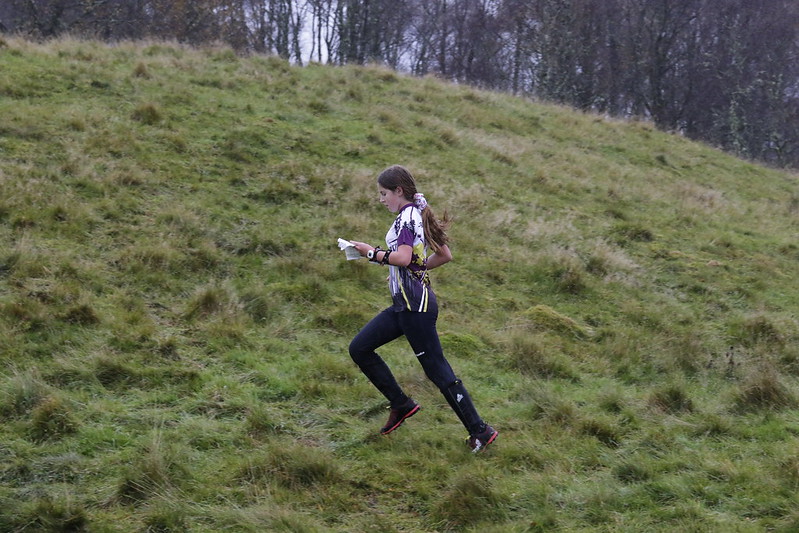


The region's Junior Squad exists to develop the orienteering skills of committed East Anglian youngsters. The squad is open to those who have at least reached a good Orange standard. The squad's monthly training sessions include Saturday mornings throughout East Anglia and an annual weekend away to find some hills. Talented youngsters have been put forward from the squad to go to national training camps run each summer in Lagganlia (M/W14), Deeside (M/W15), Czechia (M/W16), Stockholm (M/W17) and Gothenburg (M/W18). EAOA will provide one third of national camp costs for talented youngsters subject to submission of a report of the camp for the website. If you are interested in attending squad sessions please make contact with your club coach or development officer. Alternatively contact the squad coaches directly. We look forward to working with you.
Clive Wilkinson - EA Junior Coach - clive.sally@btinternet.com
Roger Gooding - EA Junior Coordinator - rojbextaylu@hotmail.com
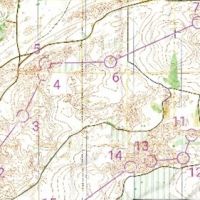
Lagganlia 2025
In July Erik (WAOC) travelled to Lagganlia near Aviemore in Scotland to train with 20+ other young athletes from across the country.

Stockholm 2024
In August Hebe Darwin (WAOC) travelled to Stockholm for the MW17 training camp. Based at the OK Ravinen club hut on the outskirts of Stockholm, use is made of public transport to access training and competition venues. Read Hebe's report.
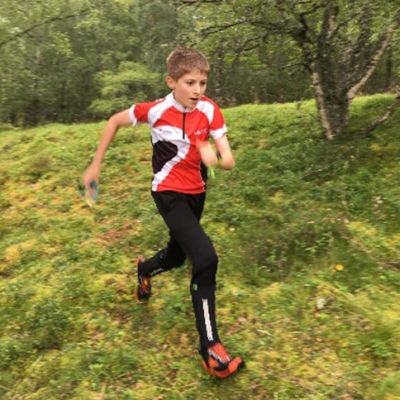
Lagganlia 2024
Alex Darwin (WAOC) has written about his Lagganlia summer camp. This training camp is based near Aviemore and is for M/W14s. Read Alex's report.

Czechia Tour 2023
Hebe Darwin was one of 19 juniors selected for a weeklong training camp in the Jizera Mountains in Czechia. Read Hebe's report.
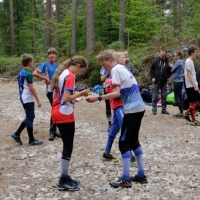
Lagganlia 2023
Kate Jarrett of WAOC joined ~24 other M/W14s from the 12 regions at the annual JROS Lagganlia training camp near Aviemore. Read her report.

European Youth Orienteering Championships 2023
Oliver Prince was selected to represent Great Britain at the European Youth Orienteering Championships in Bulgaria. Read his report about his experiencee of the weekend.

JK 2023 weekend
Marcus Richardson of NOR writes about the highs and lows of his JK weekend. Read his report.

Two medals for Erik at the British Orienteering Championships 2023 weekend
Read Erik Biernacki-Jablonski's report of his British Long Distance and Relay Orienteering Champs experience in which he gained not one, but two Bronze Medals!
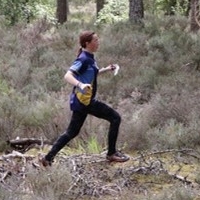
Lagganlia 2022 Tour Report
Olivia Radcliffe (SUFFOC) attended the Lagganlia training camp near Aviemore. It is aimed at M/W14’s. Read her report.
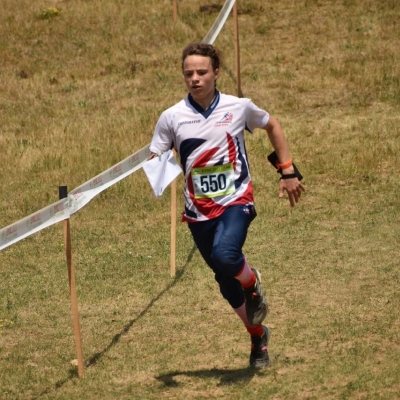
European Youth Orienteering Championships 2022
Oliver Prince (SOS) was selected for both the Czech Training Camp and also to represent Great Britain at the European Youth Orienteering Champs in Hungary this Summer. Read his report from EYOC 2022.
Findhorn 2021
Read Barney's article about his Findhorn (not-Stockholm) Tour.
EAJS in The Lakes
Warm and sunny weather greeted seven members of the EAJS that travelled to The Lakes last weekend to compete in various orienteering selection races. These took place in Keswick in the north and Summer House Knott and High Dam in the south on the SW tip of Lake Windermere.
The first race on Friday Evening was a Sprint Race held in Keswick Town (WCOC).
Results
- Barney Steventon-Barnes 17th (M18/20)
- Alex Wetherill 18th (M18/20)
- Theo Steventon-Barnes 25th (M16)
The second race on Saturday was the British Middle Distance Champs at Summer House Knott (LOC) with a mixture of oak and coniferous woodland, with fast runnable areas and steep and rocky terrain including lots of re-entrants, crags and fallen trees.
Results
- Alex Wetherill 10th (M18)
- Barney Steventon-Barnes 14th (M18)
- Theo Steventon-Barnes 21st (M16)
- Matthew Bethell 29th (M16)
- Taylor Gooding 9th (W14)
- Hebe Darwin 16th (W14)
- Abigail Prince 22nd (W14)
The third race on Sunday was the Northern Champs at High Dam (MDOC) offering a real test of navigational skills over the steep, wooded east facing slope and the relatively flatter area above it, surrounding Boretree and High Dam Tarns.
Results
- Alex Wetherill 3rd M18E
- Barney Steventon-Barnes 16th M18E
- Theo Steventon-Barnes 28th M16A
- Matthew Bethell 4th M16B
- Hebe Darwin 9th W14
- Taylor Gooding 14th W14
- Abigail Prince 20th W14
Well done to all, as everybody managed to complete their courses. Special mention to Alex, Barney and Theo who competed in all three races!
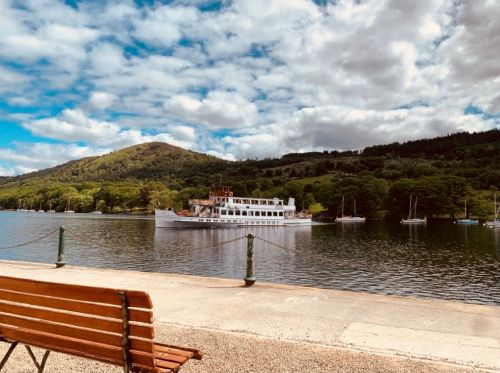
Lagganlia 2018
Read Barney's article about his Lagganlia summer camp experience.
Lagganlia JROS video 2018
The Junior Regional Orienteering Squads (JROS) have produced a video of last summer's Lagganlia training camp which can be viewed here. One of our East Anglian Orienteers was at the camp and features in the video.
JROS is funded by charitable donations through the Orienteering Foundation. We encourage you to help support the sterling efforts of the foundation, and JROS in particular, to help ensure we can continue to provide these fantastic opportunities for juniors to progress. You will be given the option to make a donation to JROS when entering the 2019 JK.
Lagganlia 2017
Alex has written about his Lagganlia summer camp. Read his report.
Gottenburg 2016
Read Ella Gilbert's report from her summer camp in Gothenburg
Funding for summer training camps
EAOA will pay one third of costs for EAOA juniors accepted on summer training camps. Please forward your claim direct to the EAOA Treasurer. The Committee asks in return for a written report from attendees.
Report form Hawkshead Training Camp 2015
Seven M16/W16 squad members went to the annual Hawkshead training camp at the end of November. It was wet this year but all gained valuable contour and night relay experience over the weekend. Read John-Henry's report.
Reports form Summer Training Camps 2015
Daisy Partridge, Matthew Clarke, Chloe Cracknell and Ella Gilbert all had an excellent time at the summer camps this year. Read some of their reports here - Chloe, Ella and Daisy.
Junior Inter-Regional Competition 2015
The team who will represent East Anglia at the Junior Inter Regional Championships in the West Midlands over the weekend of 26/27 September is as follows:
| M14 Matthew Clarke Steven Denby Sam Hague |
W14 Chloe Cracknell Rebecca Nisbet |
| M16 John-Henry Love James Nisbet Josh Partridge Callum Turner |
W16 Lucy Edwards Daisy Partridge |
| M18 Tim Harrison Roderick Mansel Sam Nicholls Bryn Wilkinson |
W18 Ella Gilbert Bronwen Mansel |
Preliminary details are available for this year's JIRC - see here.
Congratulations
to EAJS juniors Chloe Cracknell, Matthew Clarke, Daisy Partridge and Ella Gilbert who have been selected for the Junior Regional Orienteering Squads summer training camps. Juniors are selected for these camps following their performance at the major orienteering events during the year. The East Anglian Junior Squad have been very successful in recent years with athletes being selected for these prestigious training camps.

Matthew and Chloe are off to Lagganlia with other top M/W14s. The ‘Lagganlia’ training camp near Aviemore will take place on the last week in July. There are just 24 juniors selected from across the country.
Daisy will be attending the M/W16s camp in Deeside. The ‘Deeside’ training camp is based at Templars’ Park, Maryculter on the banks of the River Dee near Aberdeen. It is aimed at M/W15’s and takes place during the second week in August. There are just 18 juniors invited to this camp.
Ella will be going further afield to Stockholm. The ‘Stockholm’ training camp is aimed at M/W17’s and is also taking place during August. Accommodation is at the ‘OK Ravinen’ club hut and because of its proximity to central Stockholm use is made of public transport to training and competition venues. Ella is one of twenty top juniors to be selected.
Junior Regional Orienteering Squads (JROS) is the umbrella organisation for the 12 Regional Orienteering squads based on the British Orienteering Regions. JROS was set up to further develop the junior orienteering talent which is nurtured by the Regional Squads. Full details of these training camps can be found on the JROS website.
Daisy has also been selected by British Orienteering for the Talent Squad Summer training camp in Cairngorm at the end of July. The coaching will be aimed at top athletes in the MW16 and MW18 age groups.
Hawkshead Weekend
Four M/W16's travelled to Hawkshead for an actioned packed weekend .... read more
Tim Harrison's report from the Trossachs summer camp
This year I was fortunate enough to be selected for the M/W 15 and 16 training course in the Trossachs. The course was based at Trossachs tryst... Read the whole article here
James Nisbet's Report from the Junior Inter Regional Championships 2014

On Saturday 27th September I and the East Anglian Junior Squad travelled up to the Lake District for the Junior Inter Regional Championships. On the first day we all had individual races in Graythwaite. The area was mainly forest with some very wet swampy areas... Read the whole article here
Daisy Partridge's Report from Lagganlia 2014

Daisy Partridge was selected to attend the prestigious summer training camp at Lagganlia organised by JROS. Read her report here...
Junior Inter Regional Championships 2013

East Anglia took a team of 13 juniors to the New Forest at the weekend to compete for the region in the Junior Inter Regional Championships,
the team comprised of juniors from SMOC, SOS, NOR, SUFFOC and WAOC. In the individual races on the Saturday we had four top 10 places with the
highlight being Tim Harrison winning the M14.
On Sunday our two boys relay teams came 7th and 25th and our girls team came 14th. In the overall team event we came 9th. In the girls we also
came 9th but on the boys event we came 5th and were only 5 points behind 4th. Well done to all our team members for their excellent performances
over the weekend. We want to keep this improvement going so will need more juniors coming through to the squad from clubs as well as coaches to
help undertake training. If you have any able juniors of good orange standard or above please get in touch with Clive.
Summer Training Camps 2013
This year five junior squad members were selected to attend the prestigious summer training camps organised by JROS. Well done to all of them! Three attended the Lagganlia camp for M/W14s and two attended Deeside for M/W15s. Read some of their reports here - Catherine - James - Tim - and - Ella.
Junior Inter Regional Championships 2012

It was the team aspect I liked most about the Junior Inter-Regional Championships. It added a
whole different dimension to things. Normally, when I run I only let myself down when I make
mistakes, but over the weekend I was anxious not to let the team down. Even though East Anglia's
team wasn't big enough to contend for the higher places, it didn't matter to me, I was still worried
about making a mess up and letting people down.
Read the whole article here.
Lakes Trip 20th April 2012
The weekend of the 20th April saw a small band of 4 juniors, their parents and two coaches head north from the wet south for the sunny north west. After driving up on Friday evening we all met up at the Cartmel scout hut. This is situated in the middle of Cartmel racecourse and is a well equipped and warm base (once we had worked out the heaters!).

On Saturday morning after a light breakfast and creating a pack up, we headed to Caw Fell. Carol McNeil had arranged a British Orienteering coaching day on the open fell below Caw. This area will be familiar to anyone who ran at Lakes 2010. It is ideal for lowlanders to learn the techniques associated with contours as being open all the features both near and far are visible. Carol and helpers had hung controls and sent me details of possible exercises. We started by using the map to get to the first start kite and this was followed by a map walk. This enabled us to talk round the map, what was shown, what features were not on the map. How to use the information on contours to create line features of the valleys, spurs and reentrants.
This was followed by a session of stars and loops, based in the lee of a large crag, to use this new found way of understanding the terrain from the map. After an hour and an half at that location we moved on to a different start and ran on 6 control short loops to test the use of compass and detailed understanding of the terrain. The more experienced were asked to memorise the leg and keep the map shut to speed up their running between controls. The parents as well as the juniors took advantage of these sessions and I'm sure gained as much from the session as the juniors.
We had our packed lunch looking at Morecambe Bay in the far distance and then walked over to our final start location. At this location we all had a go at a 3.8km course to test out our new found skills. It included a 50m climb, a long run along the ridge around the individual tops and a fast descent. Two gaffled course were available and two athletes were sent off together to create a competitive edge. Below is the course

On Saturday afternoon the squad returned to Cartmel to chill and play many rounds of cards. Sally and Julie providing a pasta meal in the early evening which was enjoyed by all.
On the Sunday we had entered a regional event on the neighbouring peak of Stickle Pike. This was on similar terrain to the training and would enable the techniques coached to be tried out in competition. The event was excellently run and the numbers entered were quite high due to the British Orienteering Championships being on similar terrain in May. All our runners had good runs and the training had enabled them to understand the terrain. After lunch all started the long journey home just as the first rains came. It had been an excellent weekend in good company and was enjoyed by all.
Junior Inter Regional Championships
The region enters a team for the Junior Inter-Regional Championship competing against the best juniors from other parts of the country. This Championship takes place over two days in midsummer and is hosted by a different region each year. Each of the twelve regions has a team consisting of a maximum of 4 juniors in each class of M14/M16/M18/W14/W16/W18 making a team of 24. The competition comprises an Individual and a Relay race. The top two counters in each class for each team count towards the championship.

The Junior Squad at the 2010 Junior Inter Regional Championships in Wales
The Individual races are on the Saturday afternoon to allow for travel time to the event. Courses are planned to the same standards as A courses at JK and British Championships. The evening at the shared accommodation allows for friendships across regional boundaries to be forged at both junior and coach level.
The Relay races are on the Sunday morning. Each relay team consists of three members one 14, one 16 and one 18. The order of legs is 16, 14 and 18. Each region can enter a maximum of 4 men's teams and 4 women's teams. If regions have any surplus runners they can enter an Ad Hoc race so that they can gain experience of running in a relay.
In 2012, East Anglia is hosting the championships at Sandringham with overnight accommodation in Kings Lynn. It will be an opportunity for our juniors to compete against the cream of the British Juniors and is an experience not to be missed.
Bryn Wilkinson's Report from Lagganlia 2011
I will start off by saying that this was one of the best weeks I have ever had. I was nervous beforehand. I didn't know anyone and I wasn't sure whether I would enjoy it. But after the first evening, playing football with everyone, I suddenly realised what a great week this would be.
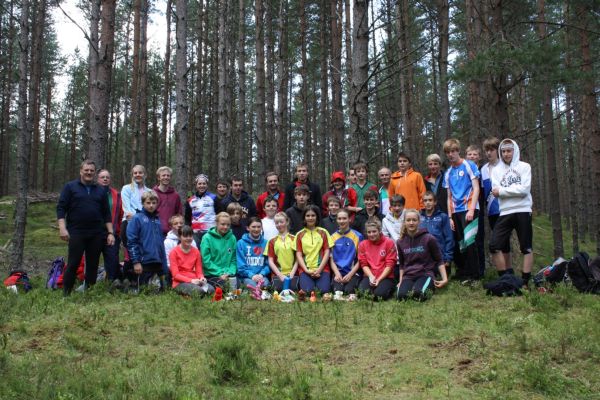
On Sunday we were focusing on pacing and bearings. Now I have to admit that I don't use either on a normal green course in East Anglia but in Scotland you really need them. When you are training on a certain thing, you really have to concentrate on doing that and not use the technique that you might normally use for that leg. If you treat it like a normal race you won't get better at the technique you should be developing. In the afternoon we did a short course and a fun clock relay. A clock relay is where there are three in team and each team has a toy. The first person takes the toy out to the first control and comes back. The next person takes the toy from that control to the next one. It keeps going like this until you get back to your first control and the last person brings it back to the start. When we got back to the camp we did some fun races, like piggy back races and shuttle runs.
Monday was all about visualisation. In the morning we did an exercise where we described to our coach what we thought the leg was going to look like then run it and come back and say if what we thought it would be like was what it was like. We then did some 1 kilometre time trials on track and terrain. In the afternoon we didn’t do any actual orienteering butwe had a map of a field and over lunch we had to write down what we thought it would look like then go and explore it to see what it did look like. After that we went into the woods and played a game that was sort of like hide and seek. The coaches went and sat somewhere and when we found one of them we had to put a pin prick on our maps where we thought they were. After that we went back to camp and did some ultra sprint courses. This is a really short course in a maze or in our case a maze of tapes!
Tuesday was probably the toughest day. It was in one of the most famous areas in Britain, Culbin. The map was strewn with contours. What made it harder was that they were 2.5m contours, so what you thought were massive inclines were half the size of what you thought they were. In the morning we did exercises based on attack points, reading fine contours, long legs and simplification. If you want to learn about contours then this is the place for you! The afternoon was less hard work, we did a 1.3 kilometre course in a low visibility part of the forest and an odds and evens relay, which those of you who have attended East Anglian squad training sessions will know all about!
Wednesday was all about race preparation. What you should eat before a race, reading the final details to get any hints about your course (eg. if you cross a road) and making sure you give yourself enough time to get to the start. There was a qualifying sprint race in the morning around a bit of well contoured forest. The fastest 6 boys and 4 girls would go through to the A final the rest would be in the B final. I was disappointingly in the B final but did a lot better in the final on a forest and urban sprint race around the camp. Except for the finish where I went to the wrong control and as I realised and tried to turn around I skidded on the gravel and fell over! The afternoon was easy. Trying out the rings at Baddaguish (8 rings suspended over a pond), I got halfway across then fell into the water. After that we had a swim in Lake Morloch which wasn’t as cold as I thought it would be.
The final day of training was definitely the wettest. It had rained overnight and made the heather very wet. In the morning briefing we had to draw a sketch map of the course we were going to do, then run it just using what we had drawn. It was difficult because I couldn’t judge distance very well because I hadn’t drawn my map to scale! We then did a couple of exercises in pairs. One we had to explain to the other person where to go while holding the map, the other we had to memorise the leg and then run it while our partner held the map. This is very useful because if you can memorise the leg you don’t have to look at the map so often, which slows you down. We then did a peg relay. This is where there are pegs at certain points on the course. If you get a peg you then have to do an extra loop to go to the next control. The person with the most pegs wins. At the same time there were coaches out there trying to put you off by running the wrong way and shouting things like “It’s over here!”
The last day was a classic race at Batten. It was a 5 kilometre course with 250 metres of climb! You don’t see that in East Anglia. I came 7th out of 16 with a time of 59.32. It was really fun doing the last 6 controls where there were five of us running together. And as I sat back on the train going home chatting with my new friends I knew I would definitely be a much better orienteer for going on this trip and that I might never have a better week in my lifetime. Lastly thank you to East Anglia and SUFFOC for paying for some of the costs of the trip and putting me forward for selection for it in the first place and the junior squad coaches for teaching me the skills required.
Report on Lagganlia 2010 by Tom Hemingway
Lagganlia is an orienteering camp for 14 year olds selected as being gifted in orienteering. I was one of the twenty-four lucky enough to be chosen from around the UK, selected to go on the tour.
I set off early on Saturday for the eight hour train journey to Lagganlia. I arrived at 16:00 to find that five others had already arrived. I was shown to my room which was to be shared with three others for the week.
By 19:00 everybody except one had arrived and we had the first of our many briefings. This briefing was to explain what we could expect and what skills we should gain from the week. It also explained about the coming days orienteering exercises. In other years, after this briefing we would have been given our O-tops, but because one of the participants was still at the O-Ringen, we weren't. So we had to wait for another day for our O-tops.
Every day we woke up at 7:30 to get breakfast and to get dressed. We would then assemble for our morning briefing about the day's activities. There would usually be an orienteering session in the morning, followed by another session after lunch. The sessions included many different orienteering skills such as compass work, pacing, aiming off, simplification, attack points, catching features, contours skills and map memory.
After dinner each night we would analyse our routes on each of the activities and explain where we went. This was very beneficial as it showed where we could improve for next time.
On Monday morning we didn't do training exercises, but instead we did two 1km timed runs. One was along a large forest track, the other through the woods with hills to tackle along the way. This was to see who was the fastest and to observe how close people's pace was on track compared to in woodland. I won the woodland run and came second on the track run. This made me the fastest runner there.
Tuesday we were doing compass and pacing exercises. One of the exercises was a team relay with a twist. It was a star relay. This is where we had a mascot which must visit all of the controls on the relay. It must do it by one person taking the mascot to the first control and then that person must come back to the start finish after leaving the mascot at the control. The second person must then go to the control where the mascot is and take the mascot to the next control. This carries on till the mascot has reached all of the controls. To make it more difficult the map detail had been removed except the feature at which the control is placed on. This meant we would have to pace and take compass bearings very accurately. The edited map we were given for the exercise is shown below left. It looks very nice and simple but it is when you see the "unedited" map (below right) when you can see that the exercise was more tricky. (The course on the right-hand map was from a different day.)

Wednesday was very different to the rest of the days at Lagganlia as we had two sprint races in the morning. One of the sprint races was in woodland and the other one was around the buildings at which we were staying. The first one the two sprints was a qualifier. If you were in the top six then you would be in the 'A final' for the second sprint. If you were in the bottom six then you would be in the 'B final'.
On the qualifying sprint Hector Haines (currently eighteenth in the British ranking) ran the same course as us. All of the juniors were very evenly matched for times (we were all around 21 minutes). Hector later completed the course in 13 minutes. We compared times but could not understand where he saved so much time.
Then we had the rest of the day having fun. We went to Badaguish, the equivalent of Lagganlia but for 16 year olds, and we had a go at a wet and muddy activity. It consisted of six metal rings which you had to swing between to get to the other side of the vile ditch. Almost everyone fell in. If they didn't then they were made to jump in afterwards. It was great fun. We then went to Loch Morlich for a swim which was freezing. After drip-drying, the coaches then decided we were allowed to go to look around the Aviemore shops. Everyone flooded into Tesco and bought plenty of value chocolate which then made the majority of people feel sick for the rest of the week.
One of the most difficult activities was on Thursday where we had to sketch out a course from a map in less than
five minutes. The next day, we would have to complete the course which we drew without again seeing the original
map. Our only map would be the one which we drew the night before.
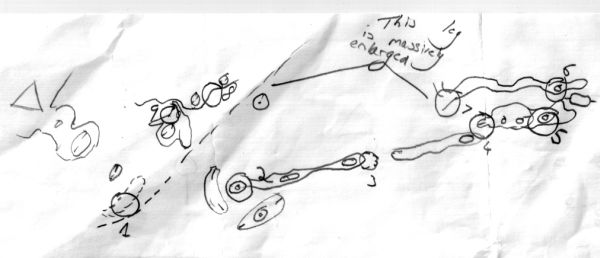 We made the map as simple as possible so that our map wasn't cluttered. Surprisingly no one got lost on this exercise
which perhaps shows how good our drawing was (an extract of my sketch is shown here). Also on that day we had to do a
paired talk-o exercise. We would have one person from each pair direct the other around the course. The one which
was directing had to stay at the start finish the whole time while the other person was directed around the course via
walkie talkie. This was dreadfully difficult and every pair got lost at some point.
We made the map as simple as possible so that our map wasn't cluttered. Surprisingly no one got lost on this exercise
which perhaps shows how good our drawing was (an extract of my sketch is shown here). Also on that day we had to do a
paired talk-o exercise. We would have one person from each pair direct the other around the course. The one which
was directing had to stay at the start finish the whole time while the other person was directed around the course via
walkie talkie. This was dreadfully difficult and every pair got lost at some point.
On Friday we had a classic race. It was in the most diverse woodland I have ever seen. It covered gridded woodland to sand dunned woodland with flat almost featureless woodland in between. It was probably the most technically difficult course I have ever tackled. Afterwards we spent around forty minutes comparing routes to understand where we had lost time. We later compared our routes to Hector Haines'. He did the course in thirty-eight minutes while the leader from the boys did it in sixty-three minutes. Our routes were roughly similar other than the fact that he almost always shortened our routes slightly. He would always be looking for the shortest route even if it was featureless.
Friday finished with a simple awards ceremony and was then followed by our last group activity before we left Lagganlia - a general knowledge quiz.
Lagganlia was wonderful experience where I gained many new orienteering skills and friends. I would highly recommend to everyone to try and get selected for it. I would also like to thank the coaches at EAOA for helping me to be selected.
Report on Junior Inter-Regional Championships, Northern Ireland, September 2009 by Sophie Louth
This year the annual Junior Inter-Regional Championships (JIRCs) were held on the 12th and 13th of September in Northern Ireland. A team of twelve juniors from the East Anglian Junior Squad (EAJS), accompanied by Graham Louth and Janet Cronk, flew to Belfast (very) early on the Saturday morning, many of us travelling to Ireland for the first time. At Belfast Airport we met up with the North West and West Midlands Junior Squads, and then shared a coach to the competition area for Saturday’s individual competition – Slievenagore in the Mountains of Mourne. After a 20 minute up-hill walk to the start, the courses ran across open rocky moorland before entering an area of forest; the final run-in was across the grassy slope of a reservoir dam, which made for a good view for the spectators. At the finish all the Juniors were presented with a stick of rock with the words “JIRCS 2009” through the middle! Our best results were achieved by Jacqueline Heybrook and Thomas Louth, coming 21st and 10th respectively in their age classes.
After the competition we all got onto busses and were taken to Ballykinler Army Base, where we were staying for the night. Initially the army wanted everyone over 16 to have their photograph taken, but once they realised how long this was going to take they just issued us all with blank passes! With all the teams from all the regions staying together there was a great atmosphere: everyone ate together in a communal dining area where there was a good supply of wholesome food to keep everyone happy, and lots of opportunity to catch up with friends from other regions. After dinner the prize giving was also held in the dining hall. Whilst EAJS didn’t win any of the main prizes, Susha Chandraker and Alex Ware won spot prizes of Lagan Valley drinks bottles. After the prize giving many of us retired to bed early, to make up for our early start.
The following morning everyone had to be up early again so that we could arrive at Lagan Valley Regional Park in time for the relay competition. The atmosphere around the start was incredible, with everyone supporting their fellow competitors in the massstarts. The terrain was challenging with a lot of undergrowth making running difficult, and an early gaffle to split the teams. East Anglia entered two boys teams: the first, consisting of Thomas Louth, Thomas Hemmingway, and Jonathon Cronk, came 13th; the second featuring Jonathon Heybrook, Todd Cooper and James Park finished in 29th. Unfortunately the East Anglian Junior Squad doesn’t currently have any W16 girls, and only one W14 girl, and so we weren’t able to enter any competitive girls relay teams. We did however enter two ad-hoc teams: one on the boys ad-hoc course (made up entirely of girls!) and one on the girls ad-hoc course. Our ad-hoc girls team, consisting of Susha, Rhiannon Ware and Jacqueline, came 3rd, with both of the teams that beat them containing boys. Meanwhile the “boys” team had only two runners, Hannah Newton and Sophie Louth, who both had good runs (unlike a number of competitors on other teams who mis-punched in the race to win!). Once everyone had finished there was prize giving, with Scotland finally winning the overall competition, having been second for many years. East Anglia meanwhile finished joint 11th. After prize giving, we bundled into the coaches to set off back to the airport for the trip home, after a very enjoyable weekend.
Congratulations to our two 2008 British Champions
Congratulations to our two 2008 British Champions, Thomas Louth M14 and William Louth M10. Thomas and William are both members of WAOC and William is a member of the recently formed East Anglia Junior Potential Squad (EAJPS).
Junior Squad member Thomas added to his success by achieving a Silver medal in the World Schools Championships in Scotland.
Report on the 2007 M/W 17 British Orienteering Tour to Uppsala - Edward Louth
When I first arrived in Uppsala, Sweden I was hit by the heat. I was worried that my two weeks of training with the GB squad was going to be characterised by dehydration. However for most of the training the temperature was some what less tropical and on a few days it rained. I had met most of the coaches before as they coached on the Halden tour last year, and they outlined their plans for the weeks ahead. After a day's training near the hut it was interesting to make comparisons between Uppsala, mostly flat with few features, and Halden, lots of rocks and large open marshes. The first week was mostly technical training with several exercises planned for each day, we were doing up to twelve kilometres a day, and culminated in the classic race. This was in Norra Lunsen, an enormous area with few features and virtually no paths, and was a real test because of the difficulty in relocating. After this we had the opportunity to rerun some of the legs we had made mistakes on and try and improve our times.
For the second week there were a number of other races intermixed with training. For this tour we concentrated on race technique, for example "trains" exercises when we are started at random intervals on a short course and have to try and catch those ahead. These force you to compete under pressure which is both fun but also pushes you to run faster than you can navigate. On one day we had four sprint races, one was around Uppsala castle which was a superb area with a good variety of techniques and speed required. Two of the races were microsprints, one around the club hut and another in a tiny area which involved visiting 29 controls, some more than once.
Over the two weeks I learnt a lot in some of the very best terrain in the world, note JWOC is in Gothenburg next year. As always the tour was great fun spending lots of time with other orienteers of my age, most of whom I have known for a very long time.
Jonny Cronk - Report on Lagganlia Tour in 2007
Lagganlia would be a great experience for anyone, but it was in particular, for me. There is no question that Lagganlia is tough to a certain extent but it is immensely enjoyable.
One thing to look forward to is getting your Lagganlia O-top. Unfortunately for me they spelt my name wrong. I hope that nobody else has to go through that traumatic experience like me.
The bedroom I shared with 3 other boys, and lucky for us, our bedroom had it's own bathroom. Nobody could complain about the food that was provided for dinner by our own two cooks. Every day they were able to cook fabulous meals that were much looked forward to after a hard day's works out in the forest. I think I had seconds of something at least once a meal.
Every day is different but has the same pattern as all the other days. Every day we got up at around 7.55 for breakfast at 8.00. After breakfast we would make our lunches and have a briefing about the day ahead. Most days consisted of exercises in the morning in our groups then exercises after lunch and race analysis in the evenings after dinner. Race analysis may not be the most fun thing to do but it is useful to talk about what you did and how you can improve.
We did many exercises throughout the week, there was lots of work that we did on compasses and I learnt how to pace. Because of the numbers of coaches (there were lots) everyone gets shadowed at some point in the day. This is really helpful for feed back and how you can improve, next time. In training, exercises such as control pick, attack points and simplification were around 2 km so you had time to do lots of them.
When you get back from training you are given quite a bit of free time before and after dinner to mess around (not in a bad sense though) and do things like play basketball, football or simply just chill out in your room or in the main gathering place (the lounge).
Like I said, not every day is the same. On one evening we found out about route gadget and how to use it. On Wednesday, in the afternoon, we had some free time and all went into Aviemore. Most people went into Tesco and bought Tesco value cola and Tesco value chocolate. While the chocolate was scrumptious the cola wasn't so nice! After Aviemore we went to Baddaguish for a game of football (that was slightly violent), rounders and a bar-b-cue with the other Scottish tour. Of course Lagganlia won! If that is a matter of interest to anyone.
On the last day we had an individual race and a relay race. Both were fun but I found that they were unnaturally hard.
I would recommend everyone to try and get onto the Lagganlia tour as the people you meet there are awesome and it is really enjoyable, mostly because of the people. I for one particularly found it enjoyable as well as beneficial for my orienteering.
Simon Gardner - Report on the EAJS weekend in Yorkshire
“Rain” was a general thought shared by all, after and during the training on Saturday. Nowhere near enough to think about calling it off, just enough to dampen certain spirits and caution footing. The area was moderately technical with an interesting combination of:
- Presumably dug up/quarried piles of stones, mostly covered by wet grass but others in strange precarious positions.
- Flat moor with occasional hidden features.
The training itself comprised a variety of original or infrequently used exercises and a well planned control pick. One of the more useful exercises for me was the relocation which, whilst not too hard, did prove a slight challenge when trying to relocate and head towards the control as fast as possible after Edward did his best at trying to get me lost. We both had our problems but I claim victory (despite Ed running me around the map twice) for Ed actually not finding one control, giving up and going onto the next one. Of course that’s not the whole story!
Sticking with good tradition there was a Relay at the end of the “day”, the setup of the relay was all but traditional, however. Each team of 3 had to visit 10 controls one at a time using map memory. In order to tell if a team had visited a control they needed to write down a description of the furry thing they found at the control. Most of these were small fluffy blobs which made a “deboingggg” noise when hit against something. They were amusing for longer than they really should have been but eventually got slightly annoying. I believe my team (Jonny, David and me) obviously would have won had the pink fluffy thing not disappeared nearer the end
Back at the youth hostel all ate cake and were merry. Finer details have been left out to preserve some general opinion that we have at least some sanity and sense so apart from an incident with a saucepan, squash and a spherically based table I won’t admit to any other events that evening, no matter how uninteresting they really were.
The event on the Sunday seemed to go well enough for most, however, I have now decided other people who run M21L are annoyingly fast so that despite having a great run I still came near bottom. In the competition for the fastest run in time I believe these were the results for the squad:
Boys
- Ed Louth, 27 sec
- Jonny, 29 sec
- Simon, 31 sec
Girls
- Jacqueline, 36 sec
- Katy, 39 sec
- Sophie, 39 sec
Looks like WAOC all the way.
Jacqueline Heybrock - The BOF Lakeside Training Weekend 2006
The BOF Lakeside Training Weekend took place from the 24th to the 26th of November. The weekend away was for 14 to 16 year olds and was my first experience of training with other young orienteers from around the country, having never been on a training weekend before. After arriving at the YMCA late on Friday night we were allocated rooms and on Saturday woke up early ready for the day ahead.
After eating a full English breakfast each regional group was sent to a different area for training. My group went to High Dam where our trainer had prepared a series of short technical runs to practice our navigational skills. The terrain was fairly open with lots of intricate contours and an enjoyable and challenging area to train. That afternoon we all took part in a sprint race around the Youth Hostel. As it was my first one I was slightly nervous about what to expect but soon began to enjoy it.
That evening we were given a talk from the World Class orienteer Graham Gristwood who shared with us some of his past experiences of World Championships and gave us tips on how we could improve our orienteering technique. We were then given some information on how to get selected for the England team and what we should try to do to match the criteria.
On Sunday we set off again to a different orienteering destination, with very different terrain in comparison to the first day. This time we were given a longer course that required us to practice a range of techniques. Again, this was useful because it enabled us to practice techniques we may not usually have used and practice the things we had learnt the day before.
We then set off after what had been a tiring but very enjoyable and brilliantly organised weekend in the Lake District.
Sophie Louth - Report on Summer Training Tour to Lagganlia
Every year the best 14 year olds from each regional junior squad are invited to attend a week's summer training tour at Lagganlia, near Aviemore, in Scotland, and this year I was delighted to be one of them.
The week started on the Saturday with the train journey up to Aviemore from Cambridge. I was on my own as far as Peterborough, but then got on the train to Edinburgh and met up with some of the others who were coming on the tour, and also some of the 15 year olds who were going to Glenmore (which is just down the road from Lagganlia). More of us got on along the way, until eventually we got to Aviemore, and from there we were bussed to Lagganlia.
Having arrived, we found our rooms - I was in a room with 4 other girls - and then went straight outside to do a compass and pacing exercise. After that we had dinner before being given our tour O-tops (every summer tour has a special O-top with the name of the place and the date on the back), before going to bed.
For the rest of the week the routine was pretty much the same every day: wake-up at 7:30 for breakfast at 8:00 - breakfast was usually cereal and toast and fruit - before splitting up into our groups for training on one of the areas around Lagganlia, returning to the centre for lunch, or having a packed lunch in the forest, before going back out to train in the afternoon, then back for tea, showers, then dinner, followed by a talk or exercise about some aspect of orienteering.
Most of the training was on Inshriac, which is the forest all round Lagganlia. During the week we did lots of different training exercises including: control pick and attack points; compass and pacing; aiming off; following a line; getting lost (otherwise known as relocation); simplification (involving drawing our own maps); map memory; and traffic lighting. We also did a number of more or less competitive races including some fun relays, a sprint race, a middle race, and a classic race.
We also had a chance to socialise, and on the Wednesday evening we went to Glenmore and played football, had a barbeque, and then a disco with the older juniors.
Finally it was time to go home and we were all bussed back to Aviemore to catch the train back home.
I really enjoyed myself during the week, and learnt a lot too, and I'd like to thank Richard Barker and all of the other EAJS coaches for helping me get selected for the tour.
Edward Louth - BOF 2006 Summer Tour to Halden, Norway
This year as with previous years BOF ran a tour for M/W16s to Halden in Norway. We stayed at the Halden IVF hut; there are three clubs in Halden which is a city similar in size to Cambridge. The hut was spacious with three floors and saunas. Placed in the middle of a large orienteering area the hut is an ideal starting point for training. We were able to orienteer from the door and drive to many stunning areas, all nearby. Surrounding Halden is a large expanse of excellent forest, all mapped for orienteering. Throughout the week Ralph Street and I shared Neil Northrop as a personal coach. This was superb as Neil is a very good orienteer himself as well as a brilliant coach. The first week was mainly spent improving our technique in the complex Norwegian terrain; with the second week concentrating on a number of races forming a tour series. The training was very demanding with both boys and girls doing around 10km a day for the first week. We did several exercises to improve our visualisation near the control. We also practiced long legs up to about 1km and simplification. One afternoon we had a distractions race; this involved the coaches trying to distract us as much as possible. They did this by several means such as stealing maps and placing dummy controls. Runners were started at random intervals which added to the confusion.
The tour champs consisted of a middle race, two sprints and a classic race. One sprint was around the hut with a map at 1:1000 which was great fun; I took as long on one control as on the rest of the course. I won the sprint race, held around a fortress in Halden, only 1:30 behind Neil Northrop and well clear of any other juniors. A scoring system was devised which meant that as I was in the lead before the classic I started last. The other four boys bunched up ahead of me, leading to me coming last. However I came second in the tour series, partly because Ralf Street was disqualified on the sprint race for crossing a wall.
I had great fun on tour and over two weeks I certainly got to know everyone very well. I learnt a lot from two weeks of training in Norway with some very good coaches. I think my orienteering has improved greatly and look forward to going back to Scandinavia at some point in the future.
Following the tour and in light of selection races I have recently been reselected for the GB START squad.
Edward Louth - Report on trip to the O-Ringen 2006
This summer I travelled to Scandinavia for the O-Ringen and two weeks of training in Halden, Norway. The O-Ringen is a major event in Sweden with approximately 14,000 competitors, many of whom camp on the event campsite. This year the event was held a few miles West of Söderhamn, a major Swedish city, on an airfield and surrounding fields. I was camping in the youth campsite along with the Gardners from WAOC and a number of other Brits, surrounded by young people from all over the world including Australians and lots of Swedish. In its entirety the campsite was enormous with a supermarket in a hanger and several marquees housing shops, restaurants and two discos.
This year was special because competitors were able to walk to all the days, so no busses. Three days finished in the campsite and the other two at an arena around two kilometres away along a sandy track. The orienteering was excellent in runable forests with complex contour and rock detail. Few paths or major features made relocation difficult and time consuming. One day I even managed to run off the map as I crossed an indistinct path without noticing it. The climb was not quoted for the courses so before the event I had no idea of how much climbing I was going to have to do. In fact none of the days had excessive climb or any extremely long legs. I found that the navigation was what cost me the time rather than physical difficulties. Even though there was almost a runner on my course (H16) starting every minute from 9:00 to 2:00 I rarely met anyone on my course. The scale of the event was quite staggering with eight run-in lanes and bridges constructed to carry runners over roads.
After a tiring week of competing in Sweden I travelled to Halden, Norway, for two weeks of training with the British START squad. The journey involved several changes between trains and buses. All was fine and on time until we reached a station where all trains appeared to be cancelled, we asked a shop assistant who unfortunately confirmed this. Luckily we were able to contact a coach driving a car which was not too far away who turned back to pick us up. It was quite a squeeze with five of us and all our luggage in a relatively small car but we got there alright.

Members of EAJS at last year's JIRC in Scotland
Previous Reports
- Regional Squads training weekend at Lakeside (November 2004) - James Lyne (SOS)
- EAJS weekend in the Lake District (October 2005) - Emma Johnson (SOS)
Site maintained by Helen Nisbet on behalf of EAOA. Page last updated on 8th October 2025 at 12:49pm
